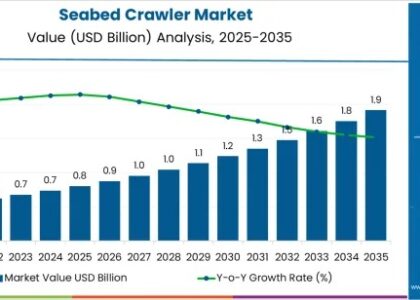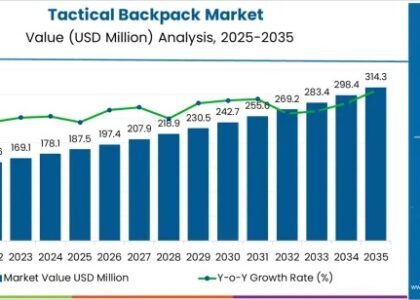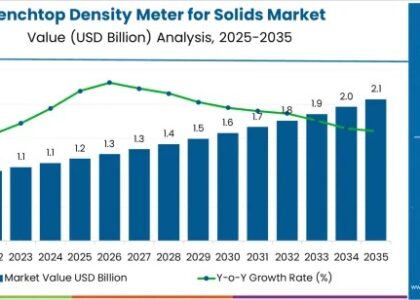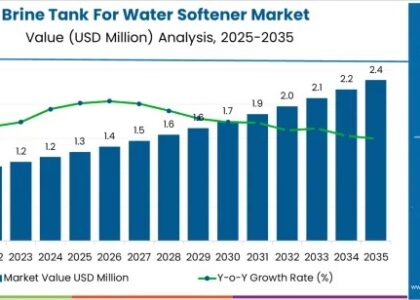The precast concrete is often praised for its efficiency, strength, and adaptability in the construction sector. However, beneath its widespread use in bridges, parking structures, and commercial buildings lies a wealth of untapped potential—especially in the context of sustainable urbanization. As global cities grapple with climate change, population growth, and infrastructure demand, precast concrete offers unique advantages that go far beyond its conventional image. This article delves into the lesser-known innovations and trends shaping the future of the precast concrete market and highlights how it is emerging as a silent enabler of green, resilient, and economically viable urban growth.
𝐏𝐫𝐞𝐜𝐚𝐬𝐭 𝐂𝐨𝐧𝐜𝐫𝐞𝐭𝐞 𝐚𝐧𝐝 𝐭𝐡𝐞 𝐆𝐫𝐞𝐞𝐧 𝐁𝐮𝐢𝐥𝐝𝐢𝐧𝐠 𝐑𝐞𝐯𝐨𝐥𝐮𝐭𝐢𝐨𝐧
While sustainability is a buzzword in modern construction, the role of precast concrete in green building solutions is not widely discussed. The material’s thermal mass properties make it an ideal component for energy-efficient buildings. It naturally regulates indoor temperatures by absorbing and releasing heat, significantly reducing reliance on mechanical heating and cooling systems.
In countries with extreme climates, such as the UAE and Australia, developers have used precast panels to meet stringent energy codes while ensuring interior comfort. This approach reduces not only operational energy costs but also long-term environmental impacts. Precast’s off-site manufacturing process results in minimal material waste, lower emissions, and cleaner job sites—contributing further to sustainability benchmarks like LEED and BREEAM.
𝐌𝐚𝐤𝐞 𝐈𝐧𝐟𝐨𝐫𝐦𝐞𝐝 𝐃𝐞𝐜𝐢𝐬𝐢𝐨𝐧𝐬 – 𝐀𝐜𝐜𝐞𝐬𝐬 𝐘𝐨𝐮𝐫 𝐒𝐚𝐦𝐩𝐥𝐞 𝐑𝐞𝐩𝐨𝐫𝐭 𝐈𝐧𝐬𝐭𝐚𝐧𝐭𝐥𝐲! https://www.futuremarketinsights.com/reports/sample/rep-gb-11579
𝐓𝐞𝐜𝐡𝐧𝐨𝐥𝐨𝐠𝐲 𝐌𝐞𝐞𝐭𝐬 𝐓𝐫𝐚𝐝𝐢𝐭𝐢𝐨𝐧: 𝐀 𝐍𝐞𝐰 𝐄𝐫𝐚 𝐟𝐨𝐫 𝐏𝐫𝐞𝐜𝐚𝐬𝐭 𝐏𝐫𝐨𝐝𝐮𝐜𝐭𝐢𝐨𝐧
One of the most exciting developments in the precast concrete industry is the integration of advanced technologies into manufacturing processes. Robotics, 3D printing, and artificial intelligence are beginning to reshape the way precast units are designed, produced, and assembled.
3D printing, though still emerging in precast, allows for the fabrication of intricate architectural components and customized façade elements that would be time-consuming and expensive to mold manually. In the Netherlands, a project known as the “3D Concrete House” demonstrated how precast and 3D printing could combine to produce modular housing with greater speed and architectural flexibility.
Moreover, AI-powered systems are now being used to optimize concrete mix designs by analyzing variables like strength requirements, climate conditions, and environmental impact. These systems improve the consistency of production and reduce overuse of raw materials—lowering both cost and carbon output.
𝐁𝐮𝐢𝐥𝐝𝐢𝐧𝐠 𝐑𝐞𝐬𝐢𝐥𝐢𝐞𝐧𝐜𝐞 𝐢𝐧 𝐃𝐢𝐬𝐚𝐬𝐭𝐞𝐫-𝐏𝐫𝐨𝐧𝐞 𝐑𝐞𝐠𝐢𝐨𝐧𝐬
The ability of precast concrete to provide superior durability and strength has made it a preferred choice in regions susceptible to earthquakes, floods, and storms. What remains relatively underreported is how it contributes to long-term resilience planning.
Precast components offer enhanced structural integrity due to controlled curing environments and uniform quality standards. Following the devastating earthquake in Nepal in 2015, reconstruction efforts utilized precast systems to build schools and community centers with improved safety and quicker assembly times. In the United States, precast storm shelters have become increasingly popular in tornado-prone areas due to their rapid deployability and proven reliability during extreme weather events.
In coastal cities, precast concrete is now being used in seawalls, levees, and flood barriers designed to withstand rising sea levels and storm surges. These solutions are critical to climate adaptation strategies, particularly in areas like Southeast Asia and the Caribbean.
𝐆𝐞𝐭 𝐚𝐧 𝐨𝐯𝐞𝐫𝐯𝐢𝐞𝐰 𝐨𝐟 𝐝𝐫𝐢𝐯𝐞𝐫𝐬 𝐚𝐧𝐝 𝐜𝐡𝐚𝐥𝐥𝐞𝐧𝐠𝐞𝐬 𝐚𝐟𝐟𝐞𝐜𝐭𝐢𝐧𝐠 𝐭𝐡𝐢𝐬 𝐢𝐧𝐝𝐮𝐬𝐭𝐫𝐲! https://www.futuremarketinsights.com/reports/precast-concrete-market

𝐔𝐧𝐥𝐨𝐜𝐤𝐢𝐧𝐠 𝐄𝐜𝐨𝐧𝐨𝐦𝐢𝐜 𝐄𝐟𝐟𝐢𝐜𝐢𝐞𝐧𝐜𝐲 𝐢𝐧 𝐄𝐦𝐞𝐫𝐠𝐢𝐧𝐠 𝐌𝐚𝐫𝐤𝐞𝐭𝐬
In emerging economies, the cost of construction and the speed of urban development are major concerns. Traditional construction methods often fall short in meeting the demand for rapid, large-scale urban infrastructure. Precast concrete, with its faster installation and reduced labor dependency, offers a compelling solution.
Countries like India and Indonesia have started adopting precast systems for affordable housing and public transportation infrastructure. In India’s “Pradhan Mantri Awas Yojana” housing scheme, precast technology helped complete housing units in almost half the time of conventional builds, while maintaining structural integrity and minimizing labor shortages.
In Africa, precast concrete has enabled the construction of modular schools, clinics, and sanitation units in remote and underserved areas. The prefabrication approach allows components to be manufactured in urban centers and transported to rural sites, thus expanding the reach of infrastructure without compromising quality.
𝐂𝐡𝐚𝐥𝐥𝐞𝐧𝐠𝐞𝐬 𝐚𝐧𝐝 𝐭𝐡𝐞 𝐑𝐨𝐚𝐝 𝐀𝐡𝐞𝐚𝐝
Despite its many benefits, precast concrete adoption still faces barriers. High initial investment in molds and machinery, transportation logistics, and a lack of skilled labor in some regions slow down market growth. Additionally, cultural resistance and regulatory hurdles in certain countries limit its widespread acceptance.
However, the future appears promising. Research into carbon-reducing cement alternatives and lightweight precast panels is already underway. Collaborations between governments, universities, and private firms are pushing the boundaries of what precast can achieve. The growing focus on circular construction—where materials are designed for disassembly and reuse—aligns well with precast concrete’s modular nature.
General & Advanced Materials Industry Analysis: https://www.futuremarketinsights.com/industry-analysis/general-and-advanced-materials
The precast concrete market is evolving beyond its traditional image, emerging as a powerful tool in the quest for sustainable urbanization. Its role in energy-efficient buildings, disaster-resilient infrastructure, and scalable development in emerging markets underscores its vast, underutilized potential. As technology and environmental priorities continue to reshape the global construction landscape, precast concrete stands ready to lead the next wave of innovation—quietly yet significantly shaping tomorrow’s cities.






